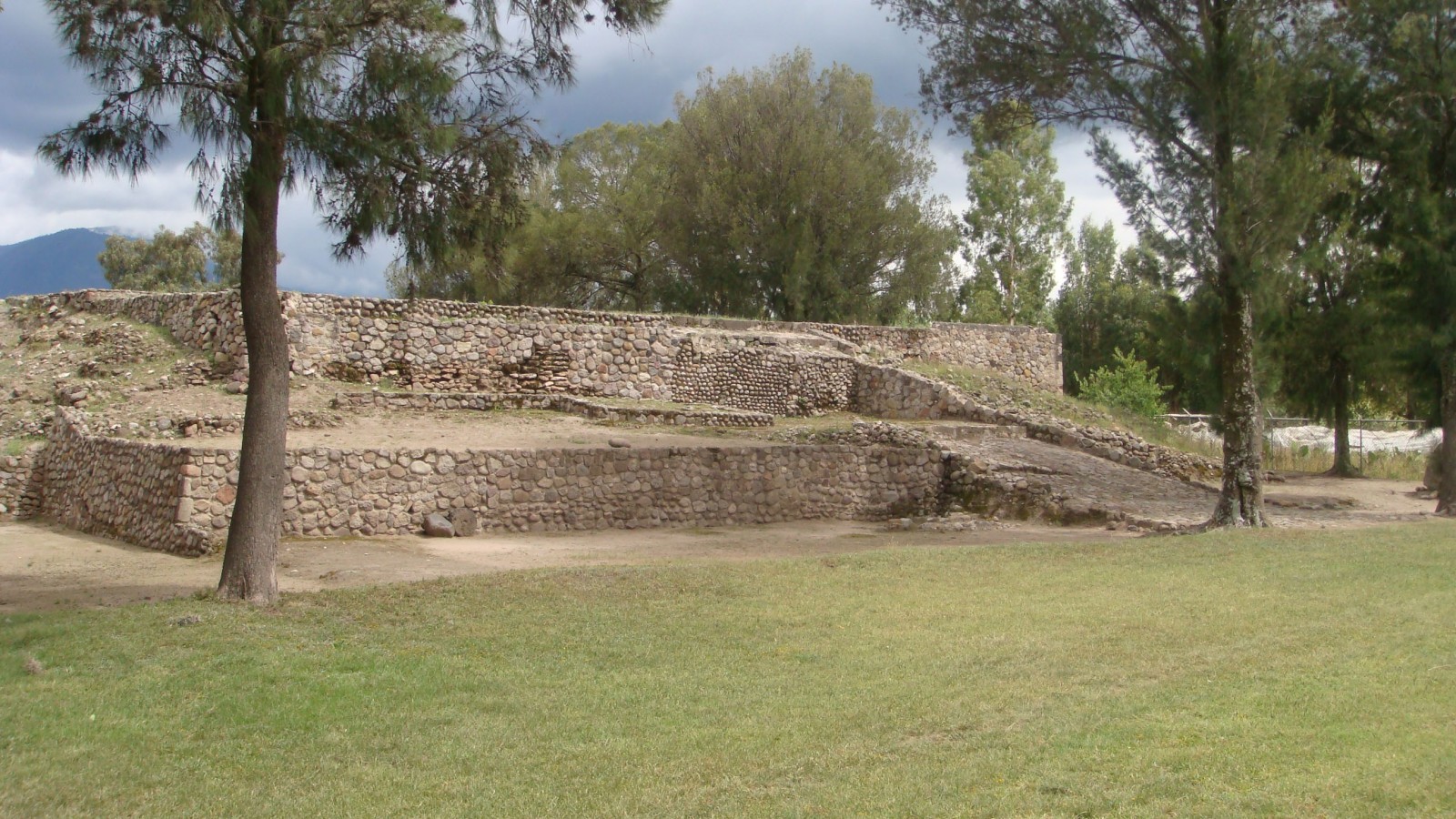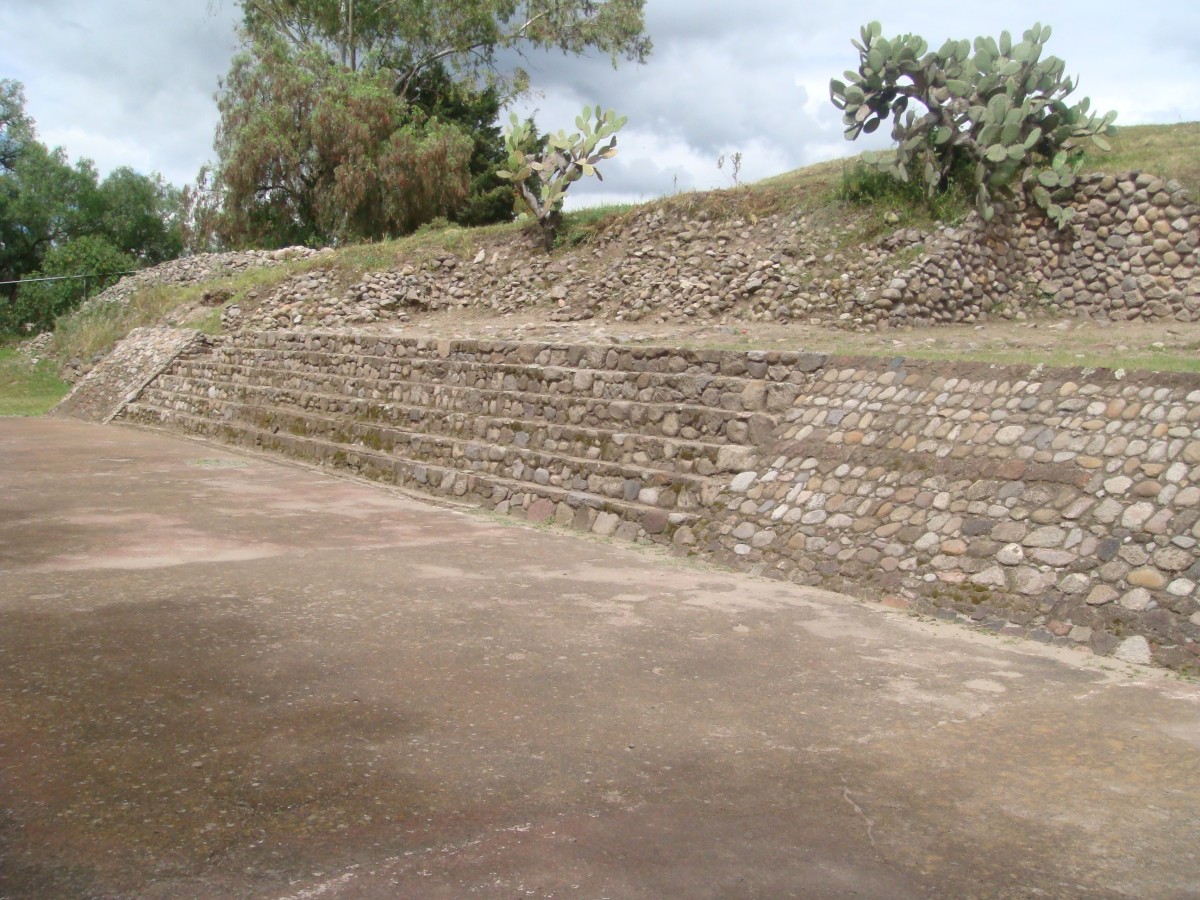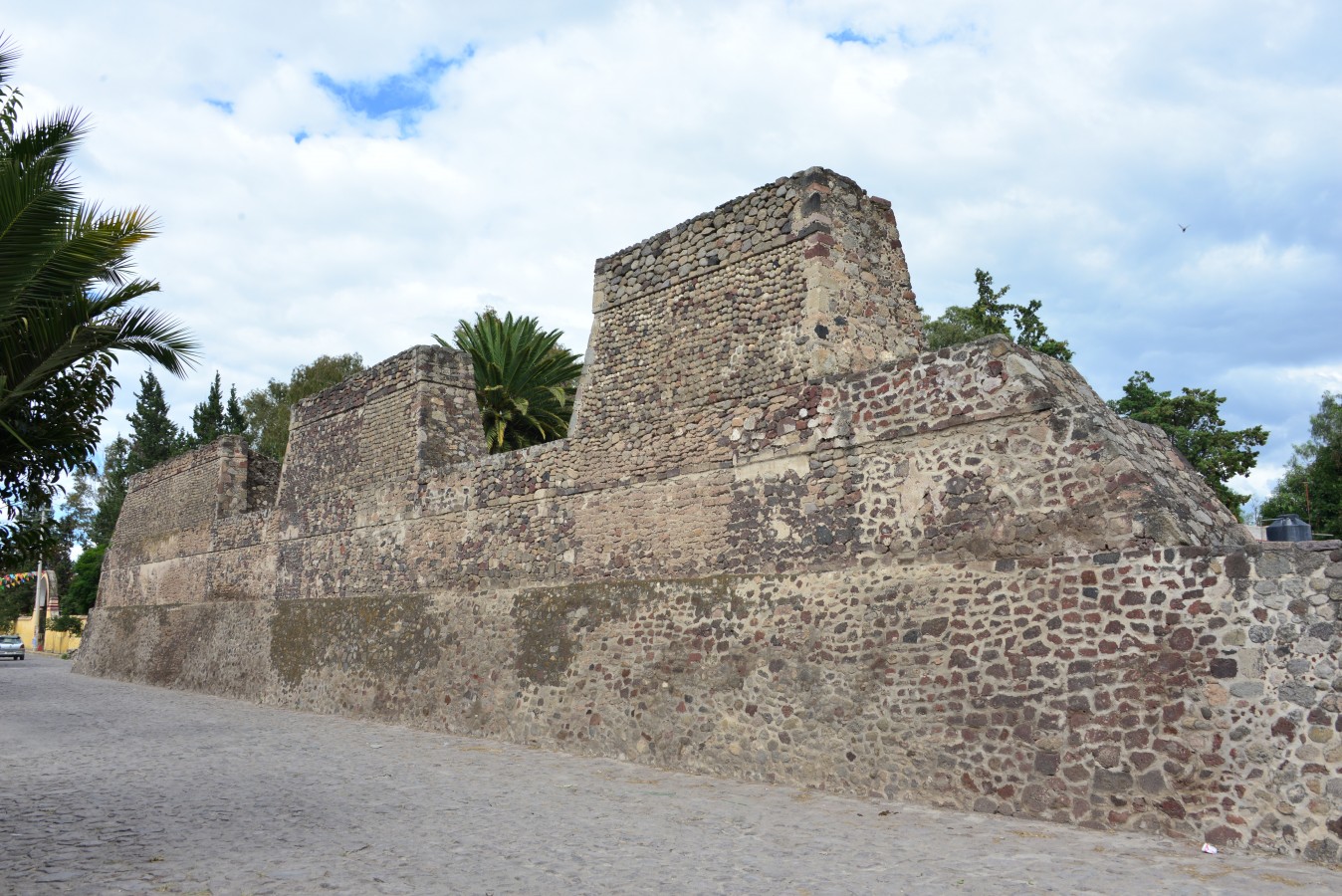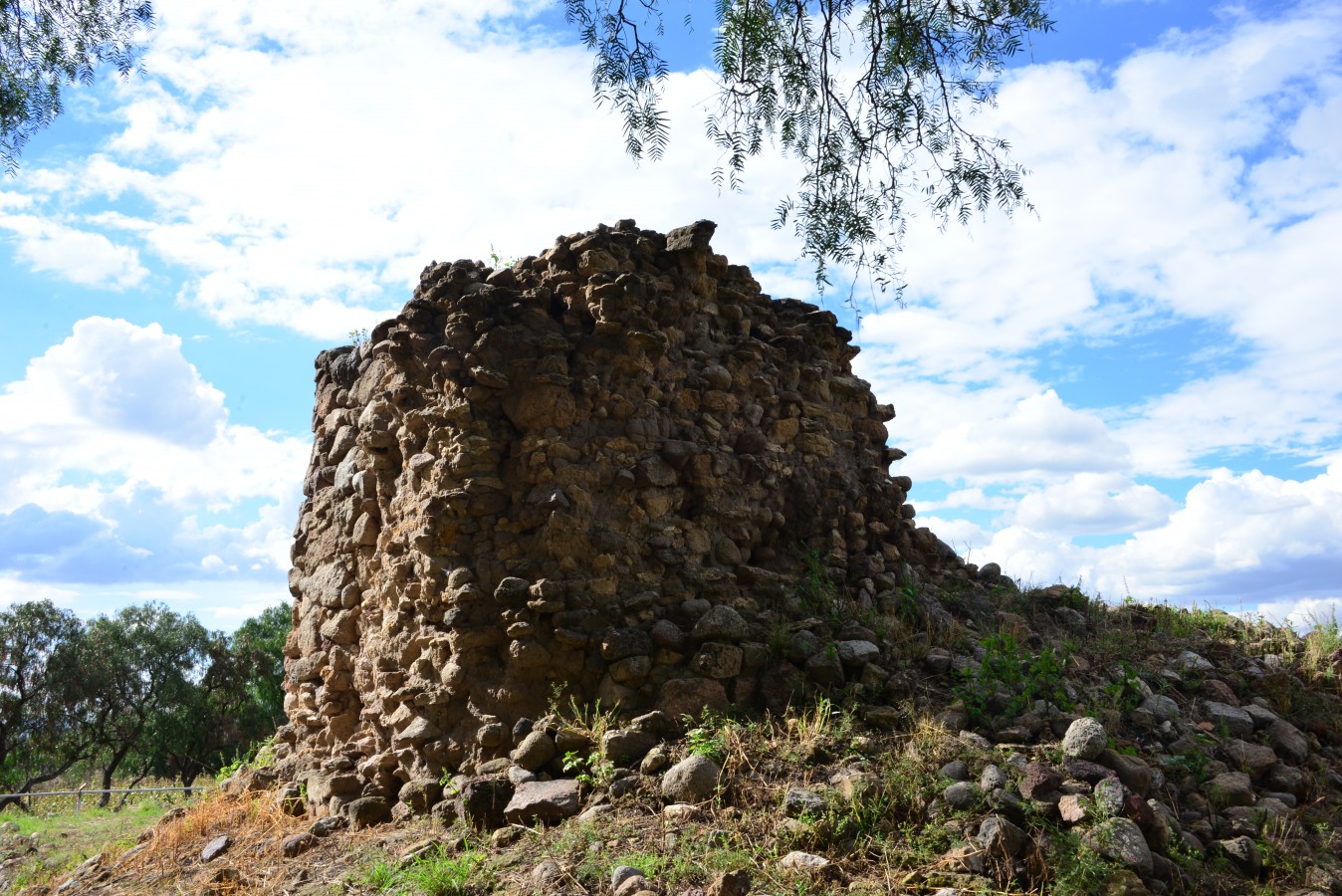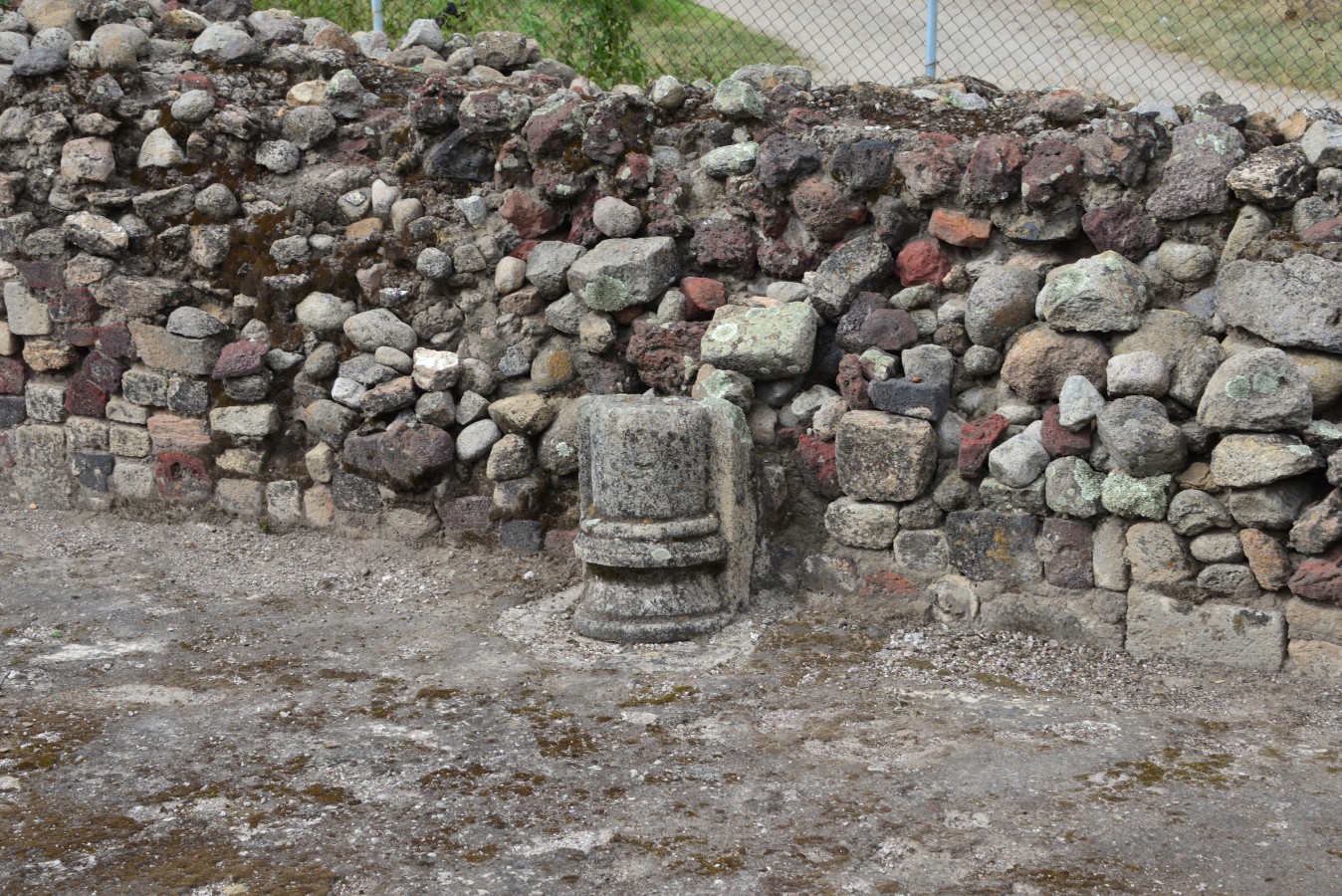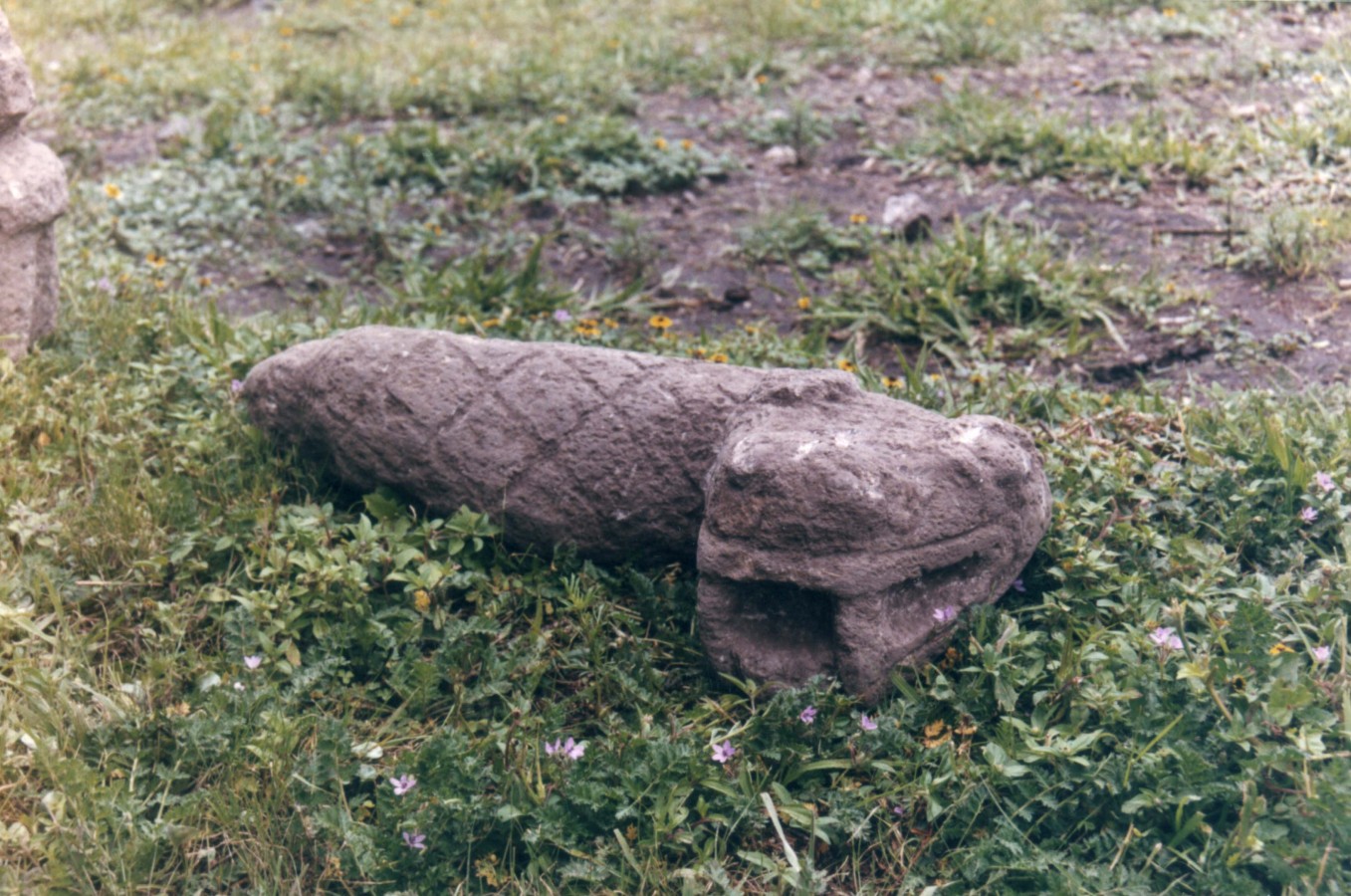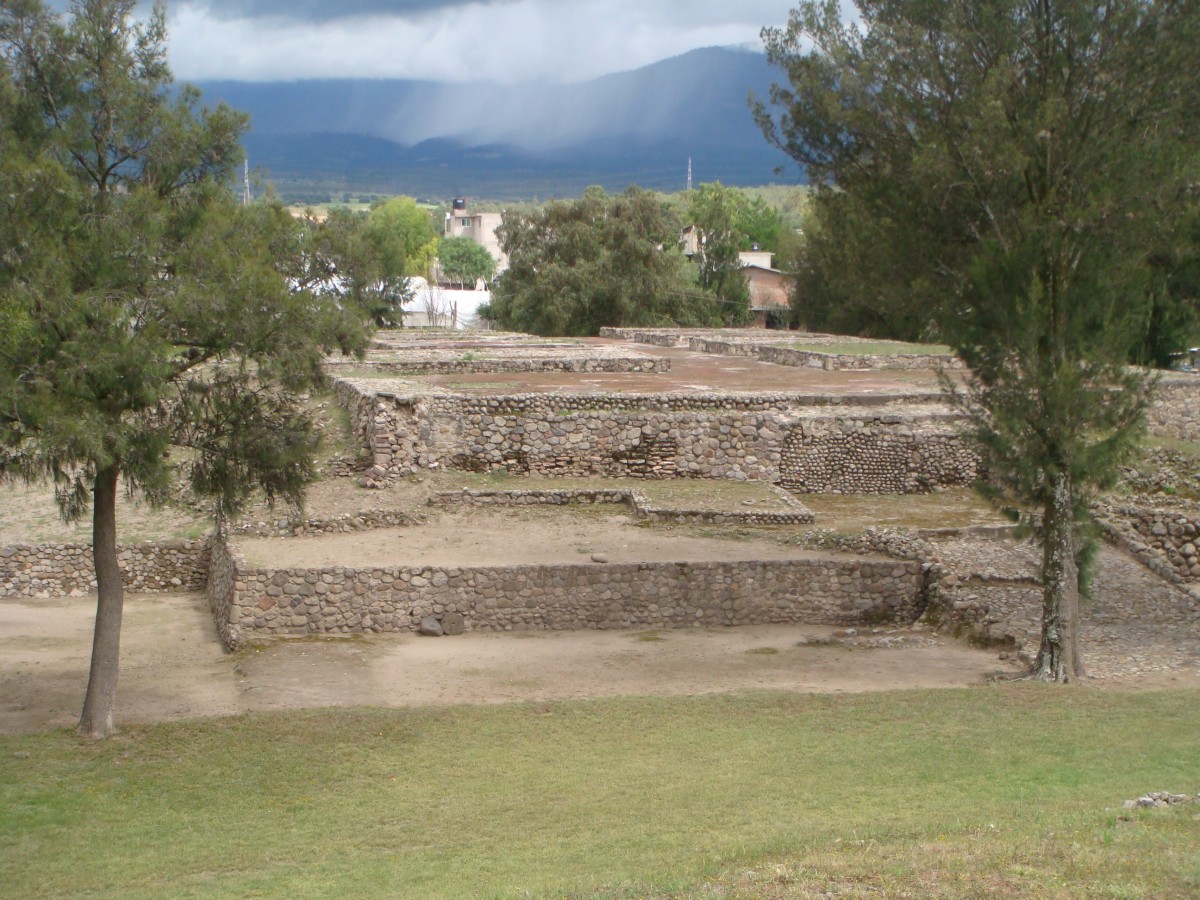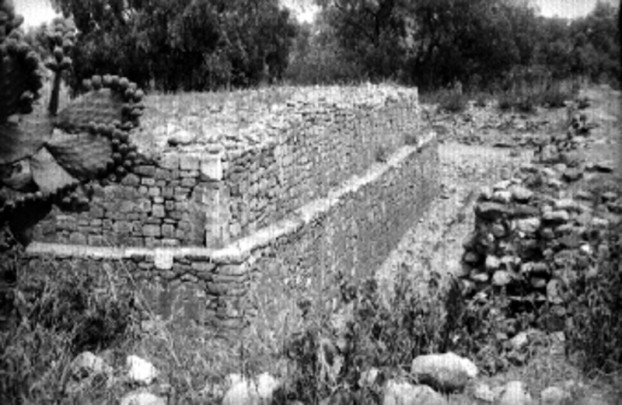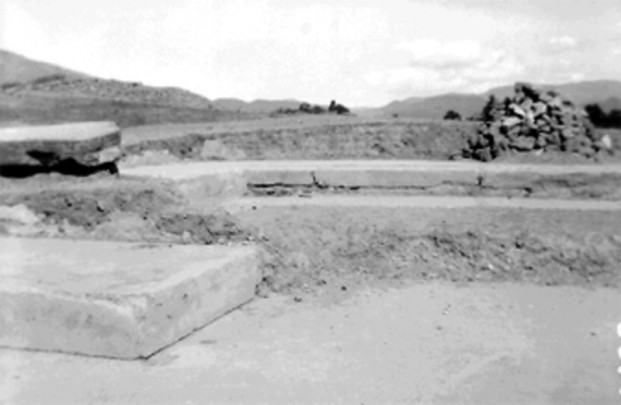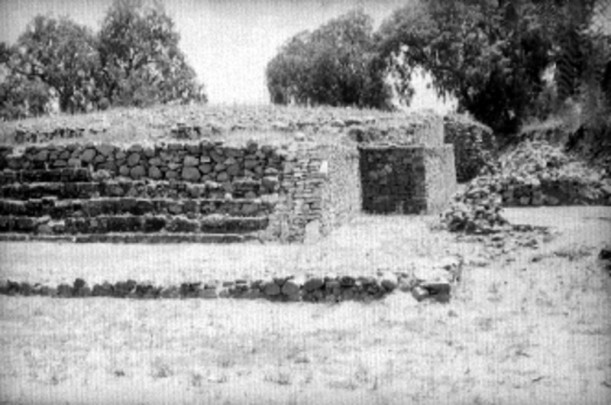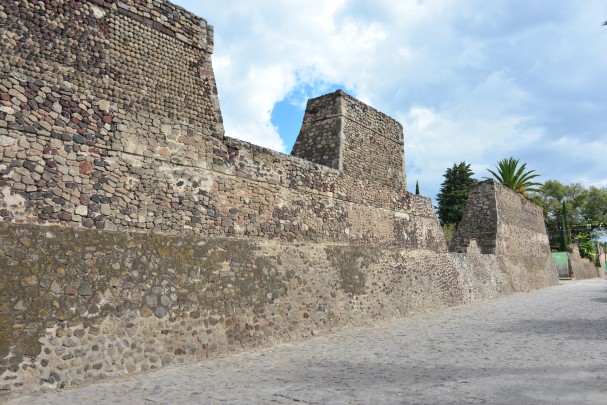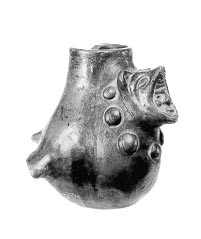Huexotla
Place of willows
Situated near Texcoco, this pre-Hispanic city was one of the most important settlements of Acolhuacan. It covered an enormous area, extending beyond the boundary marked by a great wall 765 yards long by 23 feet high.
About the site
Huexotla is the name given in various pre-Hispanic and colonial documents to the settlement lying to the east of Lake Texcoco in the foothills of Sierra del Quetzaltepec (7,447 to 8,497 feet above sea level) which occupied up to 924 acres at its height. The historical documents tell of the arrival of various groups in the eastern region of Lake Texcoco, the settlement of towns such as Coatlinchan and, later on, Huexotla and Texcoco, as well as political alliances through marriages or confrontations.
One of Huexotla’s most important historical episodes came in 1418, when Ixtlixóchitl I, whose son and heir was Nezahualcoyotl, was sworn in as Lord of Texcoco. This took place at an improvised ceremony presided over by Tlacatzin, Lord of Huexotla, with the presence of Opanteuhtli, Lord of Coatlinchan. The normal protocol for the handover of power could not be followed due to the plans of Tezozomoc, Lord of Azcapotzalco, to seize control of the lake’s eastern region; he even sent his armies to kill Ixtlilxochitl. It was then that Tezozomoc assumed control of Coahuatlinchan, granting the territory of Huexotla to Tlacateotl, ruler of Tlatelolco, and the city of Texcoco to Chimalpopoca, Lord of Tenochtitlan.
Upon Tezozómoc’s death in 1426, Nezahualcoyotl took advantage of the ensuing conflicts over succession to the rule of Azcapotzalco to retake his place of origin. In alliance with cities opposed to Tepanec rule, he defeated these groups and, together with his allies, reorganized political life. To do so, he renewed the powerful alliance of three-city rule, the so-called excan tlahtoloyan (“ruled by three” or “the place of three-part rule”), commonly known as the Triple Alliance, which in 1427 consisted of the cities of Tenochtitlan, Texcoco and Tlacopan. Netzahualcoyotl regained control of Acolhuacan, recognizing the Lord of Huexotla as one of the six people of high rank who participated in the bodies of justice and government.
After the Conquest had been concluded, Huexotla continued to be a domain and part of the encomienda temporarily assigned to Cortés, as were Chiahutla, Tezayuca and Coatlinchan. The Franciscan monastery was founded in Huexotla in 1524. Viceroy Antonio de Mendoza granted a licence to build the Franciscan monastery of San Luis D’Anjou (Saint Louis D’Anjou, Bishop of Tolouse) in 1543. Fray Jerónimo de Mendieta wrote part of his Historia eclesiástica indiana (Ecclesiastical History of the Indians) in this place, which was completed in 1585.
As regards the archeological monuments, the first news of their exploration came from Leopoldo Batres, who published Explorations in Huexotla, Texcoco and El Gavilán after carrying out the corresponding architectural surveys. Visits were made and conservation, exploration, registration and protection work was done towards the second half of the twentieth century to define the first protected area of the archeological zone. Furthermore, the architectural complexes bearing the name of the plots on which they were found were investigated and protected. Those ruins still preserved lie in the center of San Luis Huexotla, between the Chapingo and San Bernardino rivers, as well as to the south of the latter river.
One of Huexotla’s most important historical episodes came in 1418, when Ixtlixóchitl I, whose son and heir was Nezahualcoyotl, was sworn in as Lord of Texcoco. This took place at an improvised ceremony presided over by Tlacatzin, Lord of Huexotla, with the presence of Opanteuhtli, Lord of Coatlinchan. The normal protocol for the handover of power could not be followed due to the plans of Tezozomoc, Lord of Azcapotzalco, to seize control of the lake’s eastern region; he even sent his armies to kill Ixtlilxochitl. It was then that Tezozomoc assumed control of Coahuatlinchan, granting the territory of Huexotla to Tlacateotl, ruler of Tlatelolco, and the city of Texcoco to Chimalpopoca, Lord of Tenochtitlan.
Upon Tezozómoc’s death in 1426, Nezahualcoyotl took advantage of the ensuing conflicts over succession to the rule of Azcapotzalco to retake his place of origin. In alliance with cities opposed to Tepanec rule, he defeated these groups and, together with his allies, reorganized political life. To do so, he renewed the powerful alliance of three-city rule, the so-called excan tlahtoloyan (“ruled by three” or “the place of three-part rule”), commonly known as the Triple Alliance, which in 1427 consisted of the cities of Tenochtitlan, Texcoco and Tlacopan. Netzahualcoyotl regained control of Acolhuacan, recognizing the Lord of Huexotla as one of the six people of high rank who participated in the bodies of justice and government.
After the Conquest had been concluded, Huexotla continued to be a domain and part of the encomienda temporarily assigned to Cortés, as were Chiahutla, Tezayuca and Coatlinchan. The Franciscan monastery was founded in Huexotla in 1524. Viceroy Antonio de Mendoza granted a licence to build the Franciscan monastery of San Luis D’Anjou (Saint Louis D’Anjou, Bishop of Tolouse) in 1543. Fray Jerónimo de Mendieta wrote part of his Historia eclesiástica indiana (Ecclesiastical History of the Indians) in this place, which was completed in 1585.
As regards the archeological monuments, the first news of their exploration came from Leopoldo Batres, who published Explorations in Huexotla, Texcoco and El Gavilán after carrying out the corresponding architectural surveys. Visits were made and conservation, exploration, registration and protection work was done towards the second half of the twentieth century to define the first protected area of the archeological zone. Furthermore, the architectural complexes bearing the name of the plots on which they were found were investigated and protected. Those ruins still preserved lie in the center of San Luis Huexotla, between the Chapingo and San Bernardino rivers, as well as to the south of the latter river.
Did you know...
- The two stairways in the monastery’s atrium suggest the existence of a large platform upon which the building itself was constructed.
An expert point of view

Martha Patricia Hernández Mendoza
Centro INAH Estado de México
Practical information
Temporarily closed
Tuesday to Sunday from 10:00 to 16:00 hrs.
Free entry
Se localiza a 5 kilómetros al sur de Texcoco, Estado de México.
From Mexico City, take Federal Highway 190 Mexico-Texcoco. Opposite the entrance to the Autonomous University of Chapingo, take the exit for San Luis Huexotla. The site is found at the end of San Francisco street.
Services
-
+52 (722) 167 1325
-
This email address is being protected from spambots. You need JavaScript enabled to view it.
Directory
Responsable
Martha Patricia Hernández Mendoza
This email address is being protected from spambots. You need JavaScript enabled to view it.
+52 (722) 213 9581

